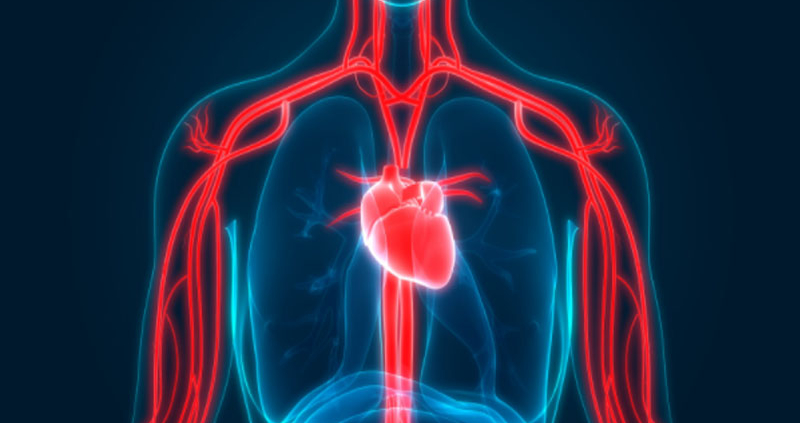Source : www.belmarrahealth.com
When it comes to having a healthy body that will support you throughout your day’s activities, paying attention to your blood circulation is essential. Blood circulation should be at its best given that it is a vital function in the body.
It helps transport blood from one organ to another facilitating their optimal performance and also affects your blood pressure levels. Keeping tabs on your blood pressure gives you a clearer understanding of your circulation. Get in touch with a reputable bp monitor manufacturer to get yourself a bp monitor you can always rely on.
With this in mind, finding out more about blood circulation will come in handy. You’ll be in a position to identify symptoms of poor blood circulation and seek medical attention on time. Additionally, you’ll also get to see the best ways to promote blood circulation naturally. Take your time to go through this article and pay keen attention to the details.
Table of Contents
What is blood circulation?

Blood circulation refers to the flow of blood from one organ to another throughout your body. Blood circulation is essential given that it carries oxygen and nutrients that are important for your body organs to function at their best. It involves the use of the heart, arteries, and veins. This combination is referred to as the circulatory system. The circulatory system should work at its best to ensure that the blood flow is adequate. With blood circulation, there are two types involved. They include:
PulmonaryCirculation
In pulmonary circulation, deoxygenated blood is taken from the heart and flows to the lungs. This is where the oxygen is introduced and the carbon dioxide removed. Once that is done, the oxygenated blood then flows back to the heart.
SystemicCirculation
In systemic circulation, blood is moved between the heart and the rest of the body. It distributes the oxygenated blood to the different cells and brings back deoxygenated blood to the heart to undergo pulmonary circulation.
How does blood circulation work?
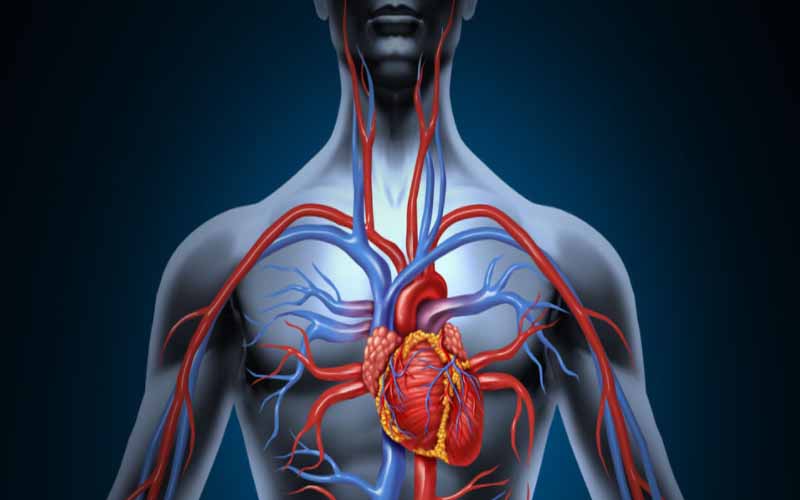
As said earlier blood circulation involves the use of the heart, arteries, and veins to facilitate adequate blood flow through the body. This combination makes up the cardiovascular system tasked with transporting oxygen and other important nutrients throughout the body. When it comes to how it works, the arteries found in the heart are tasked with carrying blood away from the heart while the veins carry it back to the heart.
Blood circulation begins when the heart relaxes between two heartbeats. Once this happens, the blood flows from the atria which consist of the upper 2 chambers, and into the ventricles which are the lower 2 chambers. Once this is done the two chambers then expand and pup blood into large arteries.
This is referred to as the ejection period. Keeping in mind the two different types of blood circulation, you should keep in mind that the processes will differ. When it comes to the systemic circulation, the left ventricle will pump blood that is rich in oxygen into the aorta.
Once this is done, the blood then flows to larger and smaller arteries entering into the capillary network. Here the blood then deposits the oxygen and important nutrients while picking up carbon dioxide and other waste products. Now, this blood gets into the veins and is directed back to the heart into the right atrium and deposited into the right ventricle.
This is now where the pulmonary circulation discussed earlier begins. The right ventricle pumps the deoxygenated blood through the pulmonary artery and into the lungs. This is where the carbon dioxide is removed and oxygen reintroduced back to the blood. The blood is then taken by the veins back to the heart and the next cycle in the circulation begins.
The cause of poor blood circulation
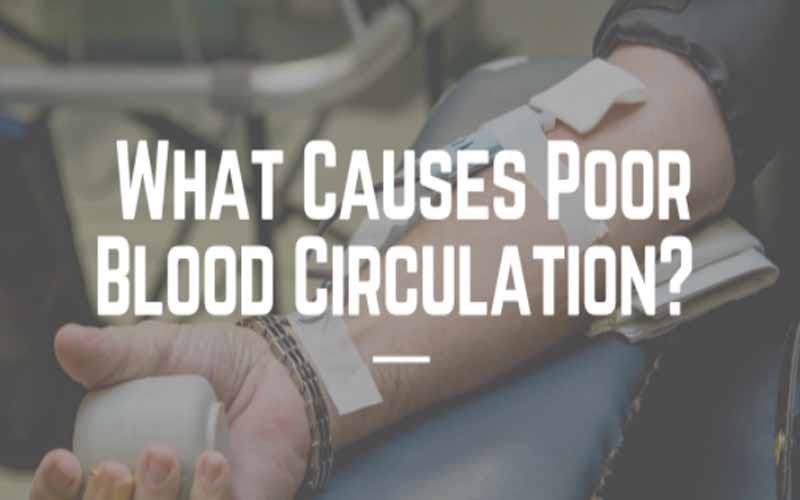
If you are suffering from poor blood circulation, there are a few things that could be triggering this. Some of the most common causes include:
Blood Clots
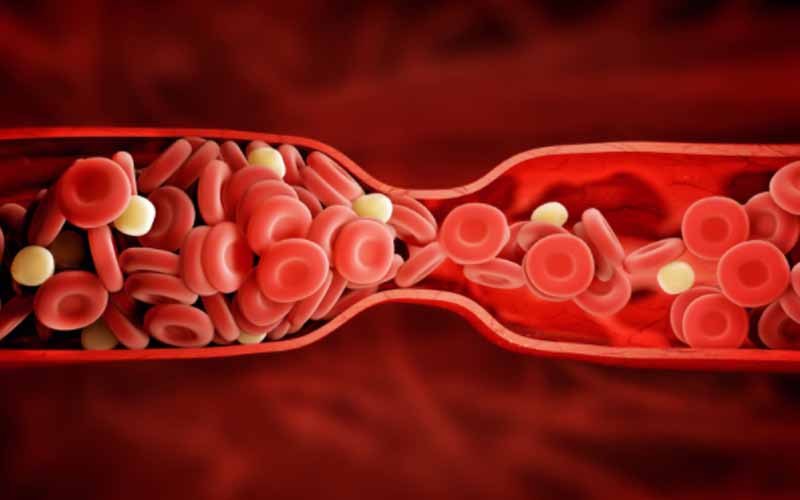
Blood clots can occur anywhere in the body making them a hindrance to the adequate blood circulation required. Blood clots will hinder the flow of blood either partially or completely depending on their size. The most detrimental blood clot that would cause significant damage to your blood flow is that found in the legs or arms.
Blood clots are a serious problem that needs to be addressed before they cause any more issues. This is mainly because, when a blood clot breaks away, it could tear through different organs in your body. If it finds its way to your heart, you are at a high risk of suffering from a stroke. This is why it is important to address blood clots earlier on to avoid such risks.
Peripheral Artery Disease
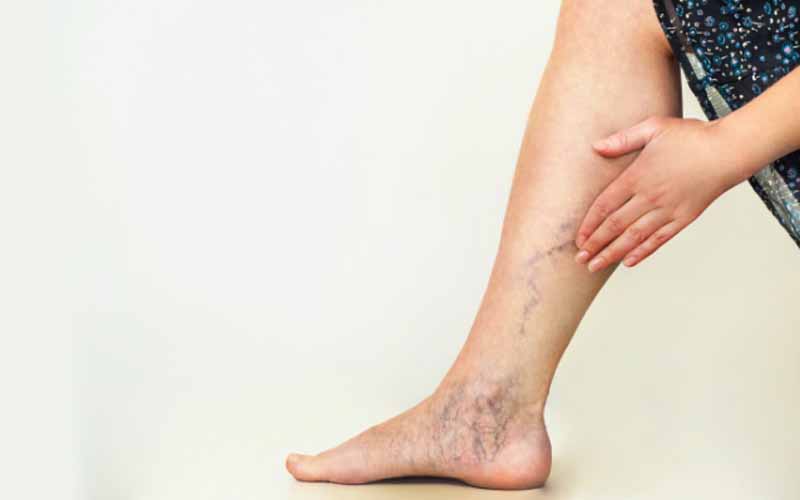
The narrowing of blood vessels and arteries is caused by Peripheral artery disease and may hinder the circulation of blood. It mostly affects the legs resulting in poor blood circulation around that area. With this condition, you may also suffer from atherosclerosis which is the build-up of plaque in the arteries.
When this happens, the arteries tend to stiffen which results in decreased blood flow. If this is left unattended, you may suffer from a stroke. However, if the build-up is formed in your heart’s blood vessels and arteries the most extreme if left untreated would be a heart attack.
Varicose Veins
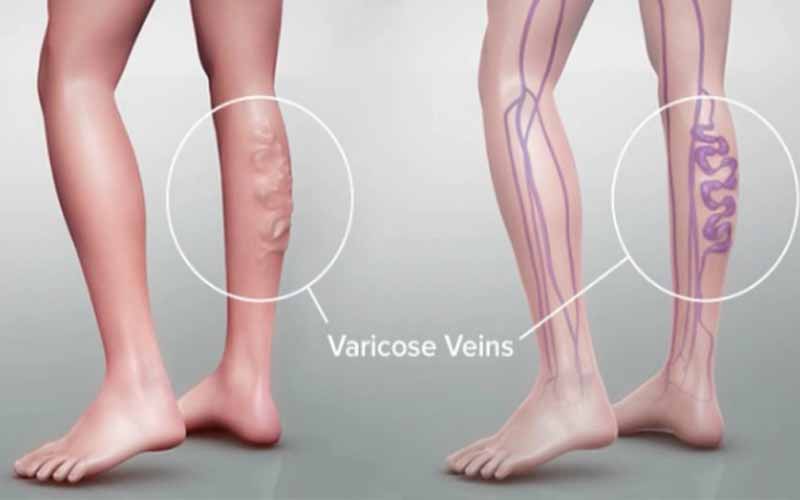
This is something that will mostly affect the veins found on the back of the legs. It involves the enlargement and engorgement of veins mainly as a result of valve failure. With this, you find that the veins are not able to work at their best and move blood like the healthier veins.
This results in poor circulation in the long run. Additionally, this condition may also result in blood clots which also hinder the circulation of blood. With this condition, those who are at greater risk are women, overweight or obese people, and those with a genetic link. If a member of the family has it then you are likely to suffer from it too.
Obesity

When it comes to obesity, you find that excess weight predisposes people to more health problems. For instance, with obesity, you are more at risk of suffering from varicose veins and other blood vessel problems. Additionally, with the excess weight, being seated in one position for a long time with no movement results in poor blood circulation. It becomes difficult for blood to flow accurately given your current condition.
Diabetes

With diabetes, we mostly associate it with affecting the sugar levels in our blood. However, this condition can also result in poor blood circulation in some parts of the body. Poor blood circulation in a diabetic patient will result in cramping legs, painful calves, thighs, or buttocks.
This appears to be more painful to people who are physically active compared to those with advanced diabetes. This is because they have reduced sensitivity in their pain sensitivity and may not feel it as much.
Raynaud’s Disease
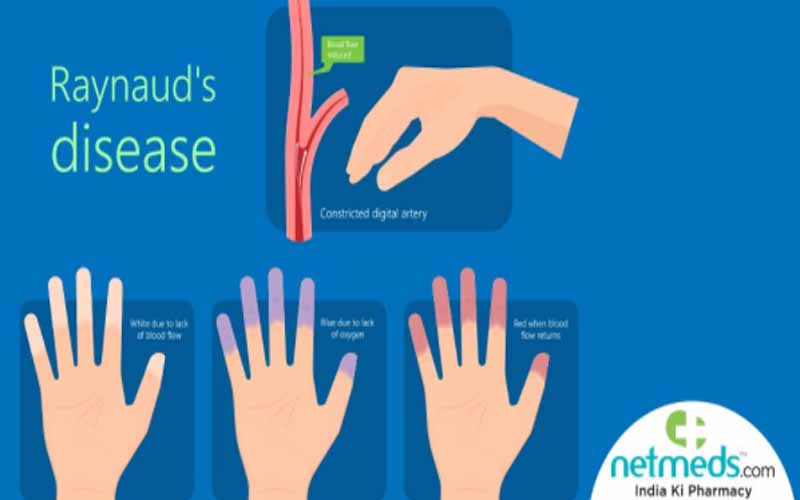
Raynaud’s disease involves the narrowing of arteries found in the hands and feet. This disease usually results in severe and chronic cold hands and feet. With narrow arteries, you find that blood flow is hindered which results in poor blood circulation. This disease plays a huge role in poor blood circulation which is something you need to keep an eye on if you suffer from it.
Impact of poor circulation

Now that you know more about the causes of poor blood circulation, you may be wondering how this impacts you and your health. Well, there are a few things you need to consider here. Some of the impacts you’ll experience include:
Severe Numbness and Tingling Sensation

When blood flow is restricted for some reason and there is poor blood circulation, you find that the organs furthest from the heart tend to suffer the most. This is where you start feeling numb in certain areas of the body most especially the arms and the legs.
Additionally, it may also result in a tingling and needle piercing sensation. This can be quite uncomfortable and painful which is why you need to ensure that the blood circulation problem is addressed.
Extreme Swelling

One of the major downsides of poor blood circulation is that you can easily build up a lot of fluids in your system. These fluids are then deposited in certain parts of your body resulting in swelling. If not addressed, the swelling goes to the extreme and may even hinder the movement of the affected parts.
This swelling is referred to as Edema and is also associated with heart failure. It is mainly caused when the heart is unable to pump enough blood to the body resulting in poor blood circulation.
Digestive Problems

For adequate and accurate digestion, the body highly depends on blood circulation to make it possible. However, with poor circulation, you find that it facilitates the accumulation of fatty matter across the abdomen.
This makes it a bit harder for the body to accurately digest the food you take in. This in turn results in digestive problems. The results of these digestive problems could be in the form of diarrhea, constipation, or cramping.
Cognitive Dysfunction

With poor blood circulation, you find that the brain may be severely affected in the process. This could be as a result of low blood flow getting to the brain or the different changes in blood pressure levels. The brain is severely affected and may lead to cognitive issues like memory loss and other associated conditions.
Joint Pain

When it comes to the effects of poor circulation, you find that the joints tend to be more painful seeing as the flow of blood is limited. The pain in the joints is mostly experienced in the feet and joints. It becomes severe for those suffering from severe cold hands and feet. As the blood flow starts to easily flow it becomes more painful and less relatable. Additionally, the joint pain becomes worse when you are engaged in long seated or standing sessions. The best is to alternate to avoid exacerbating the situation.
Fatigue

With poor blood circulation, you find that the heart starts to pump harder trying to compensate for the lack of adequate blood in the body. However, this, in turn, results in fatigue and leaves you feeling worn out and unable to work on anything. Poor blood flow will significantly affect your energy levels and additionally leave you fatigued.
Skin Discoloration

The most apparent physical sign and symptom of poor blood circulation is the discoloration of your skin. You find that the skin turns blue when the blood is not sufficient to cater to the whole body. On the other hand, if the blood is leaking through the capillaries your skin will tend to turn purple. This clearly shows the impacts of poor blood circulation on your body which goes to show that you should address it.
Blood circulation related diseases
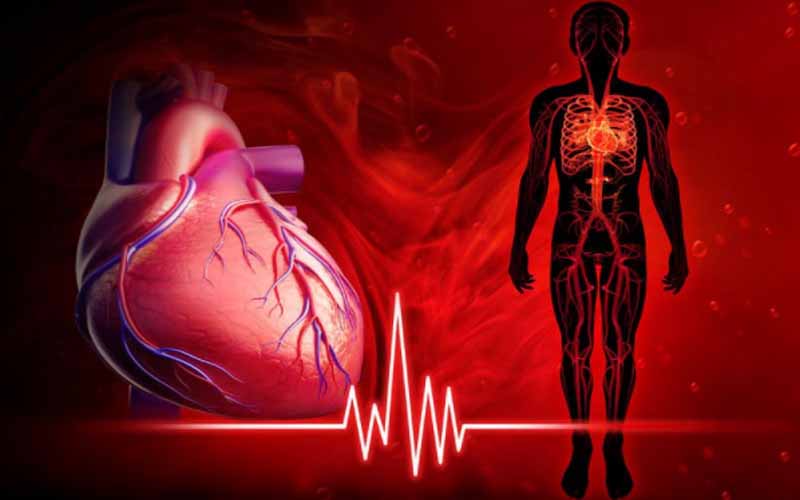
When it comes to blood circulation, you find that there are a few diseases related to it. These are diseases that either stem from or lead to poor blood circulation. Some of the related diseases include:
Atherosclerosis
The hardening of the arteries is known as atherosclerosis. It’s usually caused by a high-fat diet, which leaves fatty deposits on the blood vessel lining. These fatty deposits adhere to each other, making the arteries stiff and inflexible. Once the arteries have been damaged, it results in poor blood circulation around the body. High blood pressure is caused by atherosclerosis, which can damage the heart and kidneys and even cause strokes.
Heart attack
A heart attack occurs when the heart’s blood supply is cut off and is also caused by a blood clot. The hindrance of blood flow results in poor blood circulation in the body and could easily cause a heart attack. Although some heart attacks are mild, others can be fatal.
Mitral Valve Prolapse
Mitral valve prolapse occurs when the mitral valve does not close uniformly and bulges out or prolapses. This is a valve in the heart that pumps oxygenated blood from the heart to the rest of the body.
Angina Pectoris
Angina pectoris happens when the heart does not receive enough oxygen. It’s sometimes described as a crushing sensation. Angina pectoris patients may also experience shortness of breath, fatigue, and nausea.
Arrhythmia and dysrhythmia
Both arrhythmia and dysrhythmia refer to irregular heart rates and rhythms, and they are often used interchangeably. Arrhythmia refers to a lack of rhythm, while dysrhythmia refers to an irregular rhythm.
High Blood Pressure
The intensity or pressure of blood flowing through the veins is regularly too high in people with high blood pressure, also known as hypertension. High blood pressure may result in a stroke, vision loss, heart failure, heart attack, kidney disease, and sexual dysfunction. Ensure that you keep an eye on your blood pressure with a home-use bp monitor to ensure you keep your levels normal.
Stroke
A stroke occurs when one of the blood vessels leading to the brain is blocked by a blood clot or bursts. This reduces blood supply to the brain and prevents oxygen from reaching it.
Aortic Aneurysm
Aortic aneurysms are a form of aneurysm that affects the body’s main artery. It indicates that the artery wall has weakened, allowing the artery to expand or “balloon out.” A swollen artery has the potential to burst, causing a medical emergency.
Commonly used medication for blood circulation

If you are suffering from poor blood circulation, the first thing to consider is the treatment options available to you. For this, you’ll need to invest in some medication and vitamins as guided by your primary health care provider. Some of the most common drugs associated with blood circulation include:
Pentoxifylline
This medicine is used to reduce aching and cramping in the hands and feet. This is done by helping to improve the blood flow in the affected areas. It is efficient given that it works by decreasing the thickness and viscosity of the blood. This allows the blood to flow with ease even when it gets to the narrow capillaries and arteries. This is a prescription drug that should only be taken with clear directions from your doctor.
They are tablets that are usually taken 3 times a day and should be swallowed whole. In most cases, the effects of this medication will be felt about 2 to 4 weeks after you begin your dosage. However, for maximum benefits, it is advised to use it for at least 8 weeks. Ensure that you get the directions from your doctor with regards to your condition and how this medication should be administered.
Vitamin E
Find ways to get plenty of vitamin E into your body to help improve your blood flow. You could do this through supplementation or rely solely on vitamin E-rich foods. Prepare foods with oils like wheat germ oil, hazelnut oil, sunflower oil, and other nut oils to quickly add this vitamin into your diet.
Vitamin B
Vitamin B supplements can be found in the vitamin aisles of most supermarkets and drugstores. They are quite accessible and go a long way to improving your blood circulation to ensure that you avoid additional health problems. These vitamins are also abundant in leafy green vegetables such as spinach and kale.
Iron
Iron is also easily accessible as a supplement where you can take the pills as needed to get the best effects. You can also get enough iron from your diet if you consume a lot of red meat and leafy green vegetables. Because of the cardiovascular risks associated with red meat, your doctor may recommend that you take a supplement and eat more leafy greens instead.
Natural ways to improve your blood circulation

When it comes to your blood circulation health, you have a few natural options that will help you maintain and keep it at its best. Some of the natural solutions to consider include:
Exercise
Exercise is one of the most beneficial tools we have to boost our health and blood flow. Exercising goes a long way to ensuring that your blood is pumping and increases and boosts blood circulation. Additionally, exercise also has an amazingly positive effect on your mood and helps you control your weight. The best thing about exercising is that you don’t have to go hard and dread the process. You can make it a short and enjoyable session that you can keep up with and progressively work on more time spent on it. Additionally, you have a lot of free resources that will give you the best workout you prefer and help you follow along.
Food
The food you eat is essential especially because it fuels your body and ensures that you are in your best health. With this, you need to try your best to avoid junk and fatty foods that may deposit fat into your blood vessels and worsen the flow of blood. You also need to ensure that your food choices are not too heavy on your digestion. Remember, poor blood circulation also affects your digestive system. Focused on light foods that are natural and packed with amazing vitamins and minerals that will help improve your blood flow.
Drink lots of water
It is advised that people take a lot of water throughout the day to keep their bodies running at their best. This is something that escapes a lot of people seeing as they don’t pay attention to the amount of water they drink. You need to aim for at least 8 glasses of water or more a day. Water is essential given that it keeps things flowing and ensures that toxins are removed. With this, you’ll contribute to improving the flow of blood significantly.
Take green tea
Green tea is a drink that is neglected by many but should be a staple for improved health. It features amazing antioxidants that are so beneficial for our bodies that we cannot afford to miss out on them. Additionally, green tea also comes in handy when improving the blood flow and circulation in your body. It does this by widening your body’s blood vessels which makes it easier for blood to flow.
Dry brush your skin
Dry brushing your skin comes in handy for removing dead skin and also improving blood circulation. This is a practice that you can easily work into your routine and start reaping its benefits. With this, the best way to work with it is to do it before you shower and brush from your feet in circular motions heading towards the heart. You will notice an improvement in blood flow immediately. Be sure to use a soft brush and apply little to no pressure to avoid injuring the skin in the process.
Reduce Stress
Stress is one of the many reasons that may worsen your blood circulation issues if not accurately addressed. Take up a practice like meditation that requires you to be mindful and in the present. This will help you reduce your stress and refocus your mental energy. you can follow along with a guided meditation until you get to a point where you can engage by yourself.
Stretch more often
You must move your body if you want to improve your blood circulation. The easiest way to do this is by stretching out your body. Most people tend to spend so many hours on their desks working that they end up with a host of health problems. This is something you want to avoid and work towards having a more active day. Stretching may take a minute or two or may involve a yoga session. Just make time for it to help you improve your blood circulation.
Conclusion
Healthy blood circulation is an important aspect of everyone’s lives. It keeps you in great health and ensures that you don’t suffer from any unnecessary ailments. Take your time to get checked by your doctor and get a treatment course for your condition. Poor blood circulation can be treated and reverted depending on your efforts. Consider the natural ways in combination with your prescription drugs for maximum benefits.

